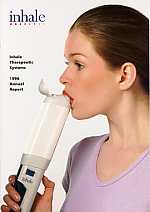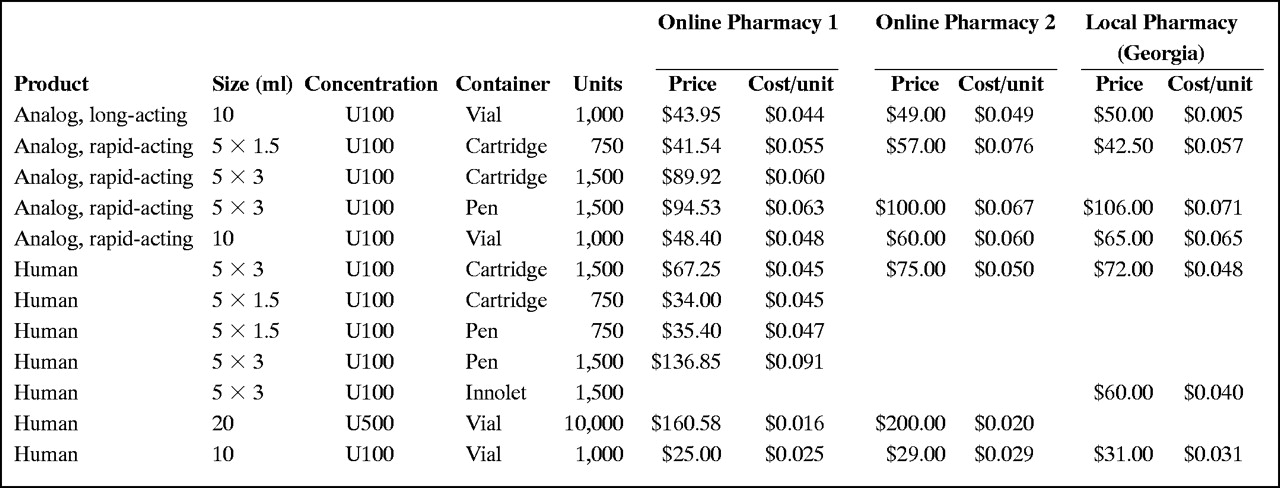Introduction to Insulin / Chemical Properties / Methods of Production and Administering / Diabetes / Insulin Affects History / History Affects Insulin
- Recently, several pharmaceutical companies have attempted to alleviate the discomfort of injecting insulin by inventing the insulin inhaler.
- e.g. Exubera manufactured by Pfizer pharmaceutical company
- The idea of using lungs as the route for insulin administration has been researched for many years, but the right form and quantity of the hormone were never established.
- Tests have shown that dry powder insulin has a more rapid onset in comparison with the human insulin administered subcutaneously
- Exubera case study
-
- In the case of Exubera, a lot of time and money was spent in researching the product but not promoting it to the right market.
-
- it is possible that physicians were not willing to try something new
-
- early adopters of Exubera were overall satisfied with the product in spite of its cumbersome design
-
- concerns regarding the potential pulmonary toxicity still remain
- Early 2008, the insulin inhaler was taken off the market under allegations that the product was too clumsy to use and the powdered insulin might impair lung function
- Analysts estimated annual sales to be from $1 billion to $4 billion but in the first year on the market the product sold just under $12 million costing the company an estimated $2.8 billion
- patients found it embarrassing to use in public comparing the product to a “marijuana bong”
Reasons for the failure of the product
- poor marketing strategy
- the pharmaceutical firm did not market the product to nurses, certified diabetic educators, and physicians who play a great role in deciding to put patients on insulin.
- confidence that the product would “sell itself”
- patients are often apprehensive about using insulin because of the need to perform numerous injections
- Pfizer believed that the inhaler was the perfect alternative to traditional insulin injections
- patients are often apprehensive about using insulin because of the need to perform numerous injections
How do pharmaceutical companies reach their target audience?
- the supply of any new product is governed by drug distribution data that pharmaceutical companies gather in order to determine how big their market and market share is in various communities and how much potential there is in the region
- data for a given brand of insulin might show how many prescriptions have been written for that brand of insulin.
- Companies thus develop target lists of physicians to whom they promote their products
- physicians thought to show an active prescribing pattern for a class of drugs will attract more attention
- physicians at this time may exert influence on the company and its sales approach.
Trends in the pharmaceutical industry
- The current climate in the insulin market involves strong marketing and clinical advocacy in favor of newer products
- The market for insulin in the United States grows at more than 10% each year and much of the growth is fueled by the introduction of insulin analogs
- During 2002, insulin and other diabetes-related products represented the second largest product line for Eli Lilly (< $1.2 billion in annual worldwide sales) and the largest product group for Novo Nordisk (< $1.9 billion in annual worldwide sales)
- Total worldwide insulin for the three largest insulin manufacturers exceeded $3.3 billion in 2002
- innovation comes at a high cost

- retail prices of new insulin products are significantly higher than those of conventional insulin preparations
- the cost of equivalent amounts of insulin, in terms of units of insulin, is between 50 and 200% higher than for the conventional insulin methods of administration
- retail prices of new insulin products are significantly higher than those of conventional insulin preparations
- growth is projected to continue at the rate of 11% until 2020
- insulin sales are projected to exceed $7.5 billion this growth will be fueled by the introduction off increasingly more insulin products and alternatives


